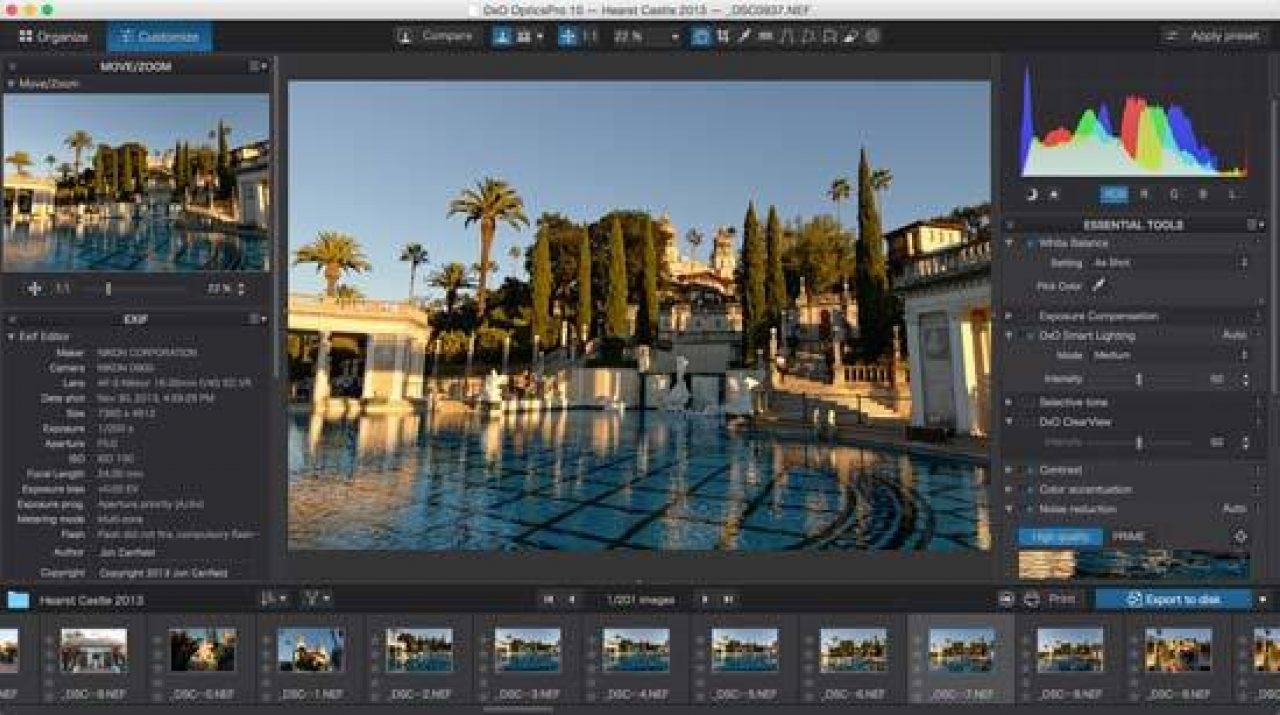

- #Dxo optics pro 9 review how to#
- #Dxo optics pro 9 review install#
- #Dxo optics pro 9 review full#
- #Dxo optics pro 9 review code#

For less extreme cases, the difference is negligible in the testing I did. Comparing the output to that from Lightroom and Capture One 5.0, I found that DxO Optics Pro 6 did a better job with severe chromatic aberration than either of the other applications.
#Dxo optics pro 9 review how to#
This method gives the application very specific information on how to correct for lens characteristics like pin cushioning and chromatic aberration to render the best possible image quality.
#Dxo optics pro 9 review install#
When you add your image to a project, DxO Optics Pro 6 will check to see if you have the appropriate module installed, and offer to install it if not (Figure 3). DxO takes a unique approach to processing, with modules for specific camera and lens combinations. Here is where the real strengths of DxO Optics Pro 6 shine. Once you’ve added your image or images to the project, you’ll switch to the Customize module.

In general, I found DxO Optics Pro 6 did a very good job of selecting appropriate settings in auto modes. All adjustments are on Auto in this mode, but you can override them if you like. The Wizard mode (Figure 2) tells you what steps are next, such as selecting your images for adjusting.
#Dxo optics pro 9 review full#
Many people have a difficult time adapting to a RAW workflow, and here DxO Optics Pro 6 helps out with a step by step guide, and different user modes from wizard based, which shows the basic controls and steps you through the process, to the advanced mode with full access to everything the program has to offer. Finally, the View mode allows you to easily compare the before and after versions of your images. Process is where your adjustments are actually applied to the images, individually, or in a batch mode. In this mode, you’ll select your images for processing and add them to your project.Ĭustomize is where you’ll do your actual image adjustments such as white balance and exposure correction, cropping, dust cleanup and more. The main window has four different modes – Select, which works like a file browser to give you access to your images. With DxO Optics Pro 6, you work in a project fashion. Luckily, DxO has a tool on their website () to help you determine the correct package. Which is the correct version for you depends on the equipment you use. Like Capture One, Adobe Lightroom, and Apple Aperture, DxO is a workflow oriented program with file browsing and image processing, ideally suited to the photographer shooting in RAW.ĭxO Optics Pro 6 is available in two versions – the Standard edition is currently on sale for $109, while the Elite edition is on sale at $199 (through Dec. Like most mature products, version 6 builds on the base by improving existing features and adding some new functionality to the application. Hot on the heels of Phase One’s release of Capture One Pro 5.0, DxO has released version 6 of DxO Optics Pro (currently for Windows only). Visit the Luminar web site to try it for free.ĭownload Luminar & Try Free » Introduction We rated Luminar as “Highly Recommended”.
#Dxo optics pro 9 review code#
Use coupon code “PHOTOBLOG” to save another $10 on Luminar. Mac users, we’re pleased to announce Macphun’s all-in-one photo editor Luminar is now available for just $69£52, and now comes with 12 portrait presets created by Scott Kelby, plus 1 month of access to KelbyOne photography training.


 0 kommentar(er)
0 kommentar(er)
